Pretty much any kind of dog leash is suitable for daily use when exercising or enjoying neighborhood walks with your dog. But if your dog has behavioral issues or you want to teach your canine chum something specific, the leash you use could be a help or a hindrance.
But what different types of dog leashes are there? And what leash is the best choice for your pet’s individual requirements?
Read this article to discover eight different types of dog leashes, their uses, and how to choose the best one for you and your pup.
8 Different Types of Dog Leashes
Now that you know why you should use a leash on your dog, let’s look at eight different leash types you can choose from.
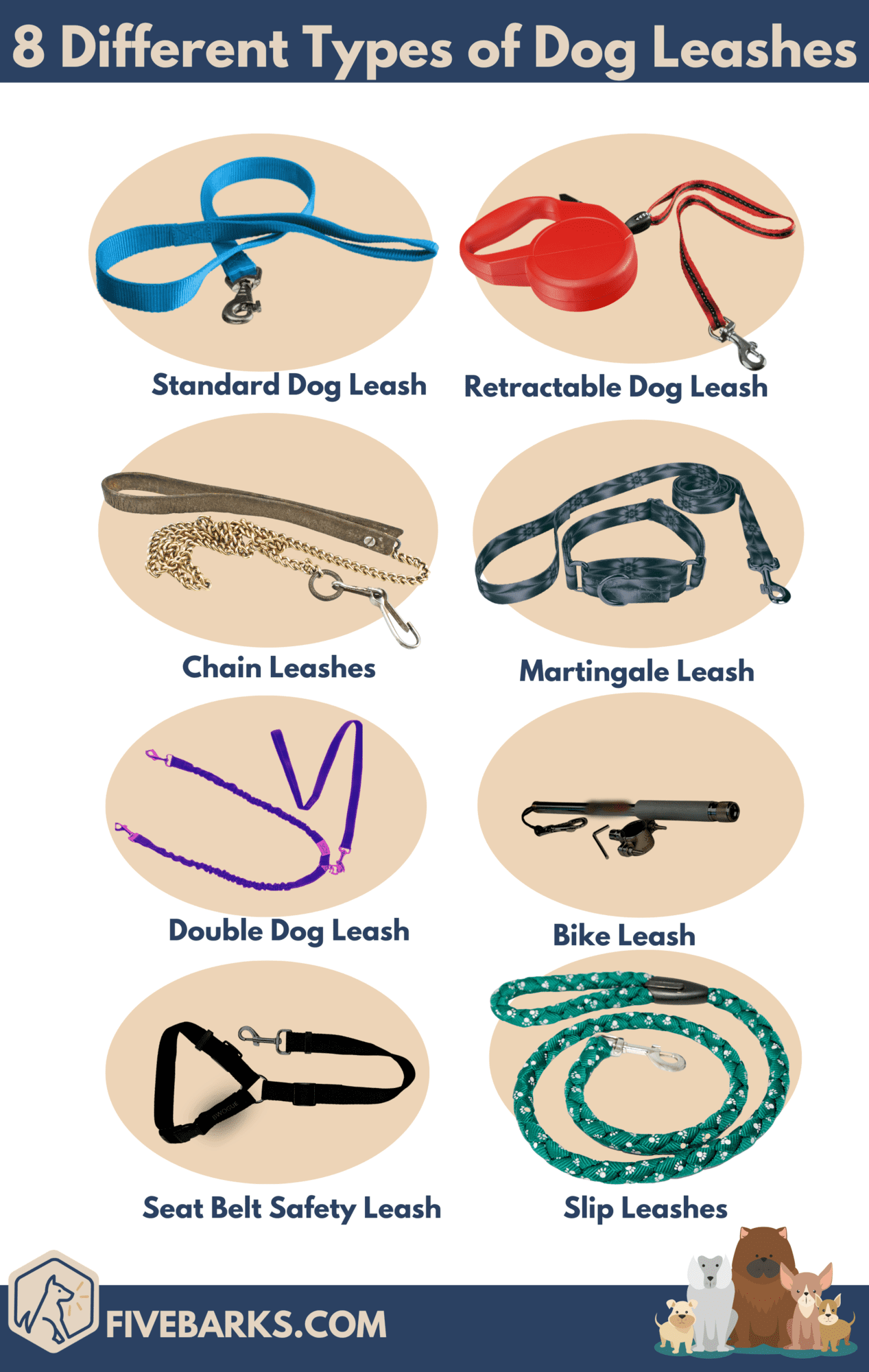
1. Standard Dog Leash
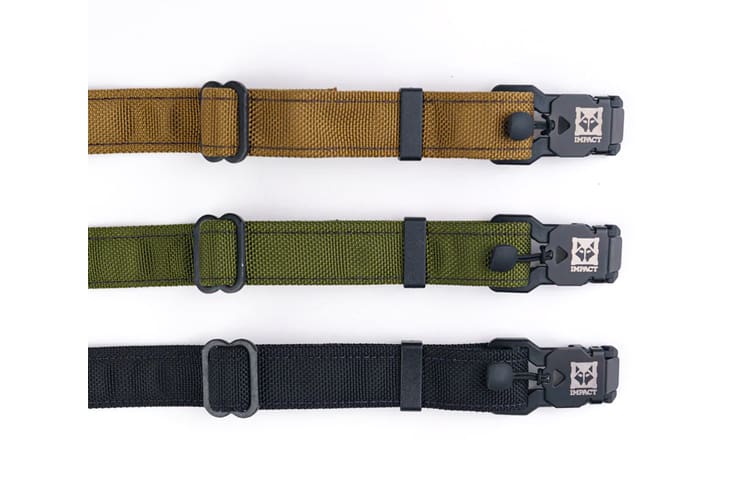
Most pet parents use a standard leash for daily exercise and basic training, and this is the most common type of leash.
A regular leash can be made from leather or nylon, although rubber and cotton leashes are also available. Nylon cord and leather are both robust and strong while being lightweight and long-lasting.
Standard leashes can measure 4, 8, and 6 feet long, with 6 feet being the most popular and versatile for puppy training and everyday use. A 6-foot leash allows you to give your dog plenty of freedom but is short enough to enable you to remain in control of your pet.
2. Retractable Dog Leash
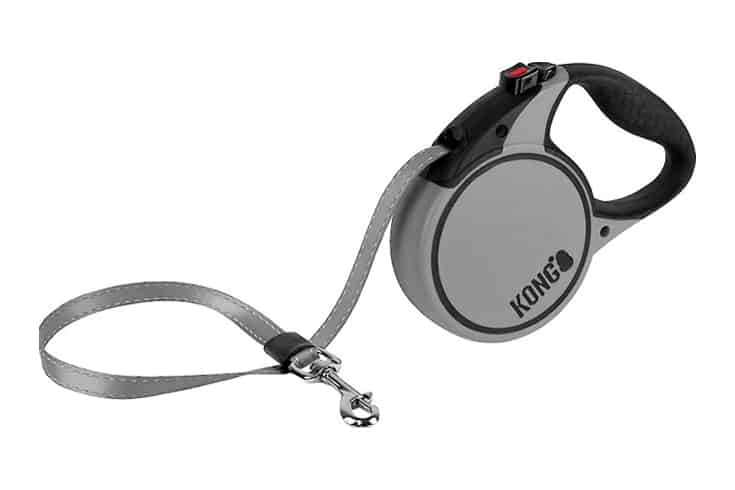
Retractable dog leashes are popular since they allow the handler to vary the leash length, giving your dog plenty of freedom while keeping him under control.
Essentially, a retractable dog leash works in a similar way to a measuring tape, extending from roughly 4 to around 30 feet. The leash has a locking mechanism set into a sturdy plastic handle, enabling you to lock the leash at your desired length.
The line is retracted back into the handle when the locking mechanism is released.
Danger!
There are a few reasons why we don’t generally recommend retractable dog leashes.
Both the handler and the dog are vulnerable to rope burns caused by the thin leash when it retracts. If too much line is used, the dog can be at risk of strangulation.
Using retractable leashes can also teach a dog to pull, which is the last thing you want! The leash will almost always have a degree of tension on it because your pet will automatically pull on the leash to extend it and gain more freedom. That undesirable behavior is rewarded when the dog reaches his goal.
Mixed Messages
When you reel in the leash and tell your dog to remain by your side, the dog instantly pulls on the leash to try to get the freedom he wants. That’s frustrating for you and confusing for the dog.
So, unless you have an extremely well-trained dog that understands basic leash manners and training distance commands, we don’t recommend using this type of leash.
3. Chain Leashes
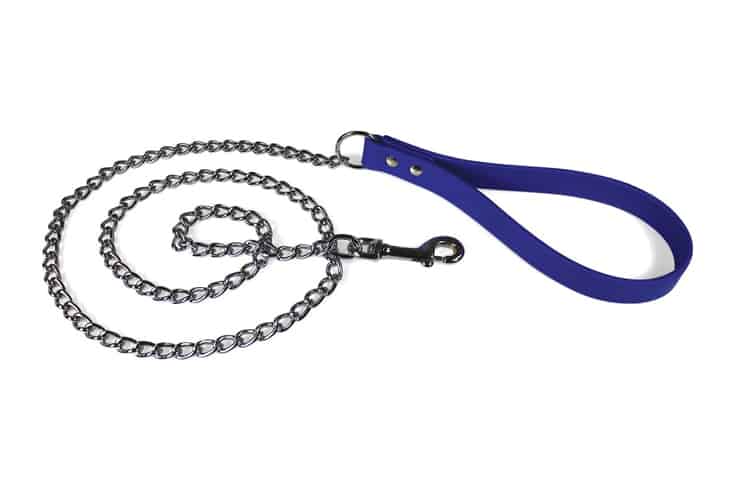
The chain leash is the strongest leash you can use and is often used as a standard-style leash. Chain leashes come in different thicknesses and weights, making this durable leash suitable for dogs of all sizes.
This style of dog leash is helpful for dogs that tend to bite and chew their leashes. If you choose a chain leash, keep an eye on your dog. Some dogs persist in chewing the leash, potentially damaging their teeth.
4. Martingale Leash
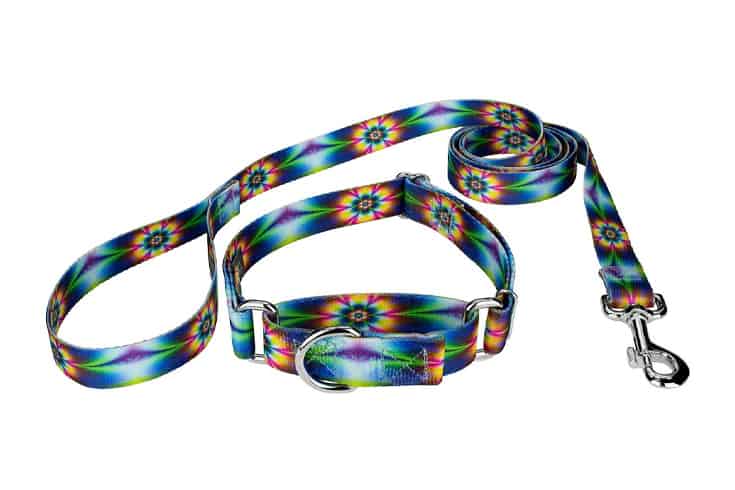
The martingale leash is a combination of a standard leash and a martingale collar.
Martingale leashes are generally used as a training aid and can be helpful when preventing a dog from pulling. The collar effect of the leash tightens around the dog’s neck when the pup pulls. That doesn’t choke the dog but applies sufficient uncomfortable pressure on the dog’s neck to dissuade the pup from pulling.
5. Double Dog Leash
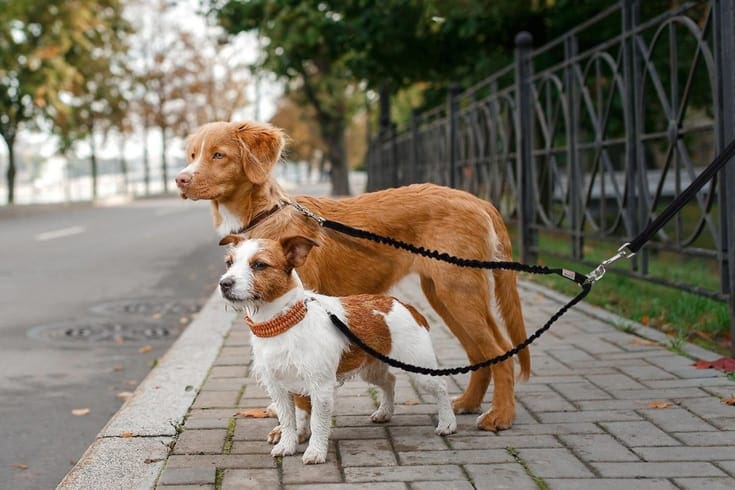
A double dog leash is used to walk multiple pups on one single leash.
The leash features one handle and leashes coming off a coupler to multiple dogs. Provided you have well-mannered dogs that don’t lunge or pull, this type of leash is an essential tool for pro dog walkers and owners of multiple dogs.
6. Bike Leash
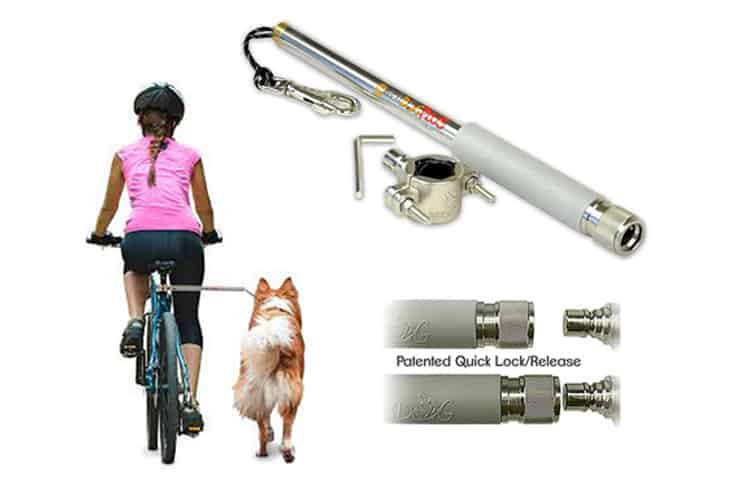
If you enjoy cycling, you might want to multitask and take your dog with you when you go riding. That can save you time and also give your furry friend a good run.
A bike leash attaches to the bike frame, offering your canine companion an adjustable distance from your bike so that your pup can run alongside. Once the dog is properly trained, taking him biking with you can be excellent fun.
Fitness?
Although you might be fit enough to go for a long cycle ride, please remember that your dog has short legs, and keeping up with you might be a challenge for your poor pup!
In addition, dogs like to stop, sniff, and relieve themselves while you’re out for a walk. If your dog is attached to your bike, he can’t do any of those things. In warm weather, your dog could quickly overheat, especially if you don’t regularly stop to give him some water.
7. Seat Belt Safety Leash
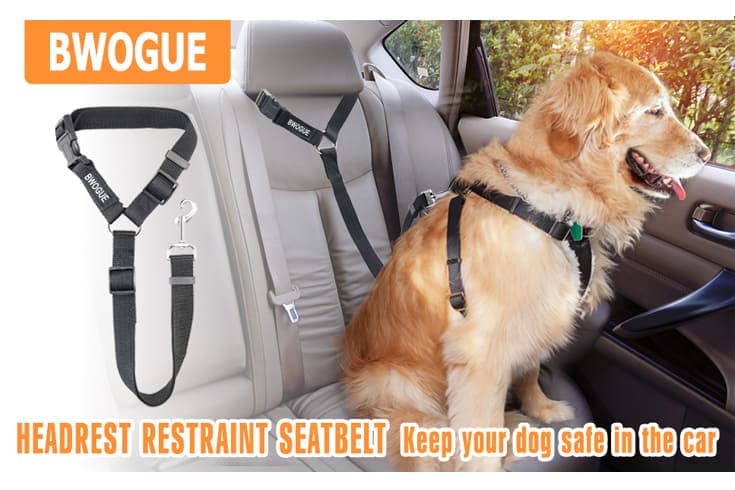
Seat belt safety leashes are shorter leashes with a clip fixed to one end for attachment to your dog’s harness and a seat belt clip on the other.
This type of leash can keep your dog from slipping off the back seat of your car during transit. The leash also keeps your dog still so that he can’t climb around in the vehicle, causing a dangerous distraction. In addition, a seat belt leash can keep your dog safely in your car if you’re involved in an accident.
Use a Travel Crate!
We recommend using a travel crate for safely transporting your dog rather than a harness and leash.
A crate keeps your dog contained throughout your journey and provides your dog with some protection in the event of a crash.
8. Slip Leashes
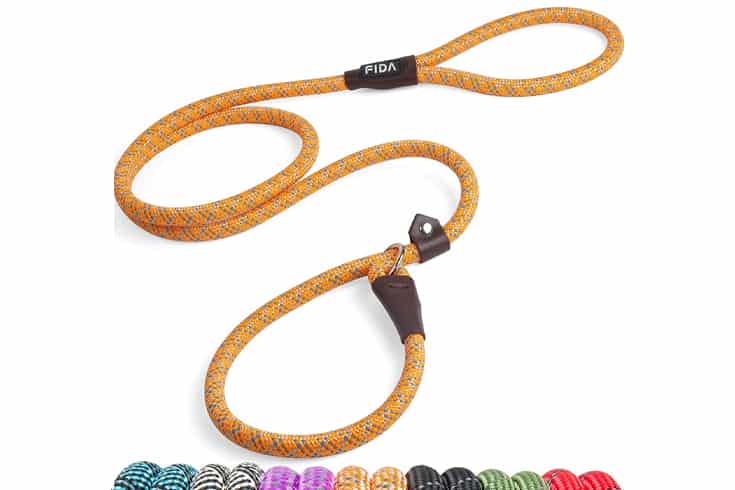
A slip leash is essentially a combination of a collar and leash all in one.
The leash passes over the dog’s head, looping onto itself. Some slip leads feature a plastic tube that slides down the leash to keep the collar in position. If the dog pulls on the leash, the collar part tightens around the dog’s neck.
Although this kind of leash is ideal for a well-behaved dog, the tightening action can cause problems if the leash is used incorrectly. Pulling the leash too hard can shut off a dog’s airway, presenting a strangulation risk. A dog can also slip out of the collar and escape.
Use a Collar
Remember that your dog must wear a flat collar bearing his ID and rabies tags. If you decide to use a slip leash, your dog will also need to wear a collar in case he slips his leash.
If you walk your dog early in the morning or at dusk when the light is poor, a reflective collar is a good choice, helping to make your pet more visible to motorists.
FAQs
Choosing the correct kind of leash can be a minefield for pet parents. So, here are the answers to some of the most frequently asked questions you might have.
Q: Why Use a Dog Leash?
A: First, many states require all dogs to be leashed in public areas. In some areas, the only place your dog can enjoy time off-leash is in a designated dog park. If you’re unsure about the leash laws in your region, ask local law enforcement for more information.
Dogs are required to be on a leash for safety reasons.
- A dog running loose in the street could cause an accident.
- An aggressive dog could attack and injure a person or dog.
- Loose dogs present a danger to wildlife and livestock in rural areas.
However, most people leash their dogs for the following reasons:
- Keeps your dog safe and stops him from wandering
- Prevents aggression toward other dogs and people
- Provides effective communication during training
- Allows you to tether your dog when necessary
Q: What leash is best for a dog that pulls?
A: There are several leash styles that can be effective for dogs that pull, including a harness-type leash, martingale collar leash, slip leash, and head collar style leashes.
Q: What kind of leashes do vets use?
A: Most vets choose a slip leash. This style of leash is quick and easy to put on and take off and offers a degree of control.
Q: How do I choose a leash for my dog?
A: The style of leash you choose depends on your dog and his behavior. However, most pet parents use a standard leash with a correctly fitted harness.
A standard leather leash is strong and looks smart, whereas a reflective leash is ideal if you walk your dog at times when the light is poor. The drawbacks of nylon leashes are primarily the risk of sustaining rope burns if the dog pulls or lunges and the tendency of nylon to retain doggy odors.
That said, nylon leashes come in a wide variety of colors, some with a reflective strip for safety on the roads at night.
The size of the leash you choose is entirely up to you. However, most people prefer a 6-foot leash since that length provides you with plenty of control over your pup while allowing him some freedom too.
Thinner leashes are more suitable for small sizes of dogs and young puppies, while a wide leash is better for a large, strong dog.
Q: Are leashes and collars or harnesses better?
A: Although your dog must wear a collar bearing his ID and rabies tags, we don’t recommend attaching your leash directly to the collar.
Dogs can sustain severe neck injuries if pulling against the collar and leash. A harness and leash give you more control over your furry friend in a more humane, safer way.
Final Thoughts
I hope you enjoyed our listicle of eight types of dog leashes. If you did, please share it with other pet parents before you go!
There’s a wide variety of leashes to choose from. Whether you need a leash for everyday walks, training a puppy, or correcting unacceptable pulling and lunging behavior in an older dog, there will be a suitable, convenient tool out there for you.
Always use a leash fixed to a correctly fitted harness rather than directly to your dog’s collar. Collar injuries can be serious and are distressing for both the dog and his owner.
What kind of leash do you use for your furry friend? Tell us in the comments box below!
